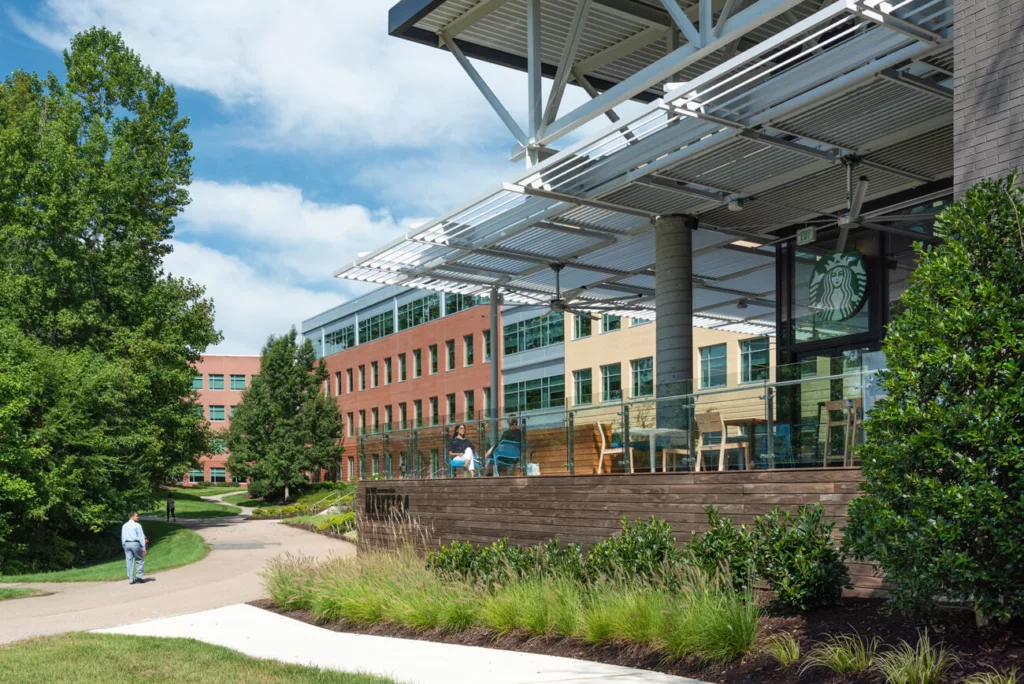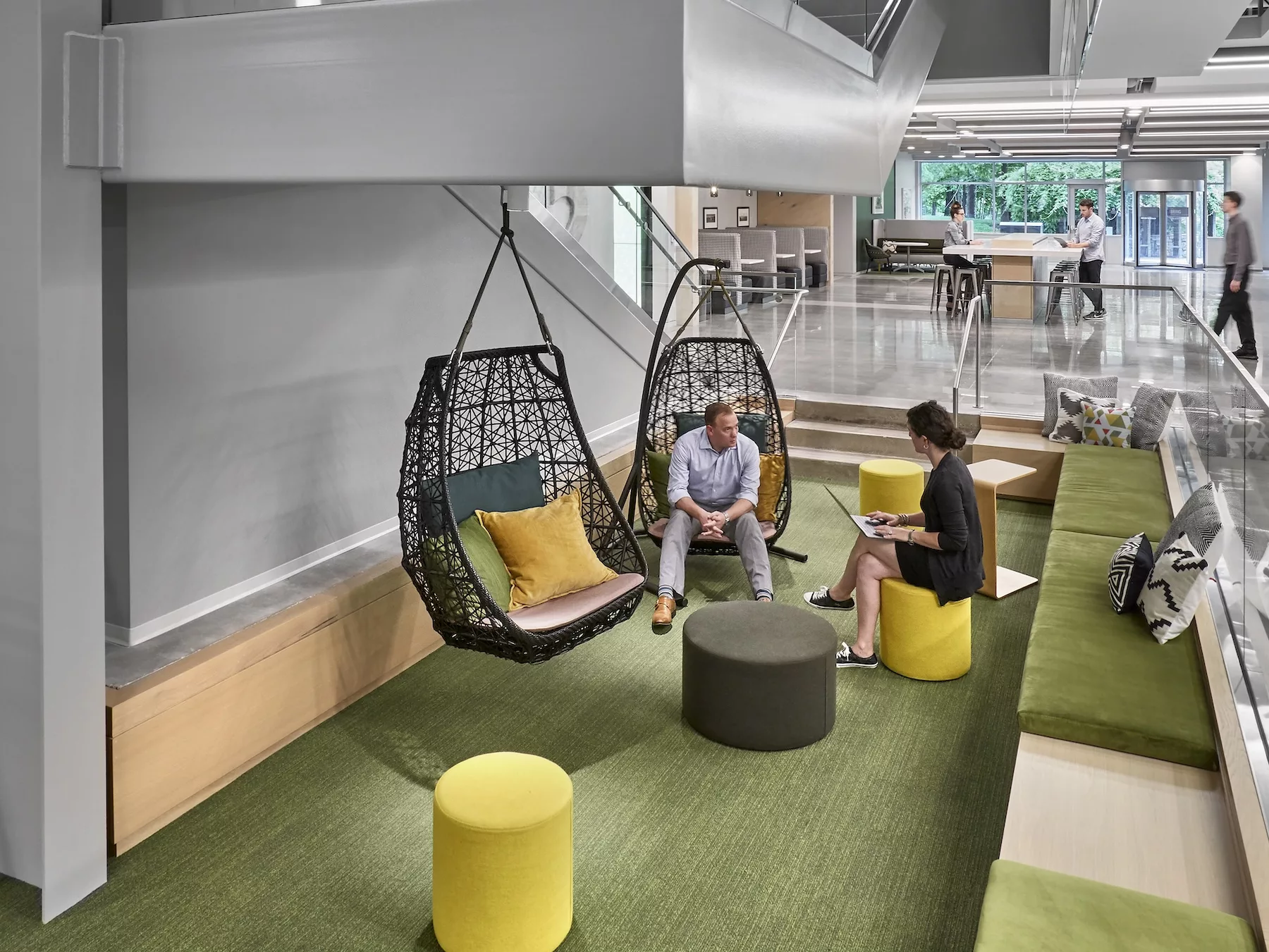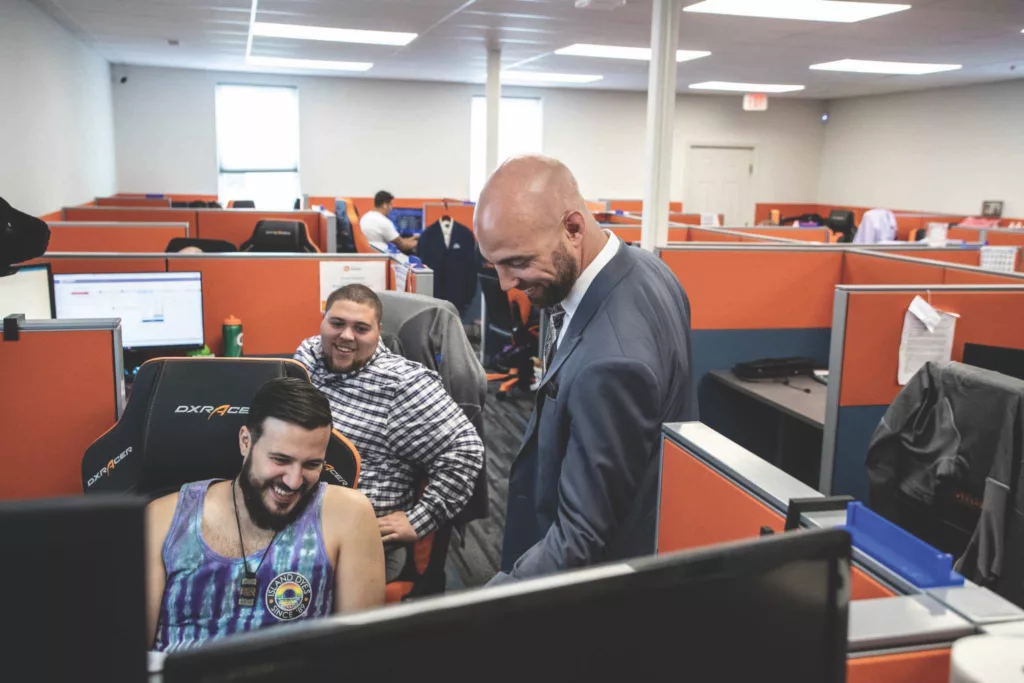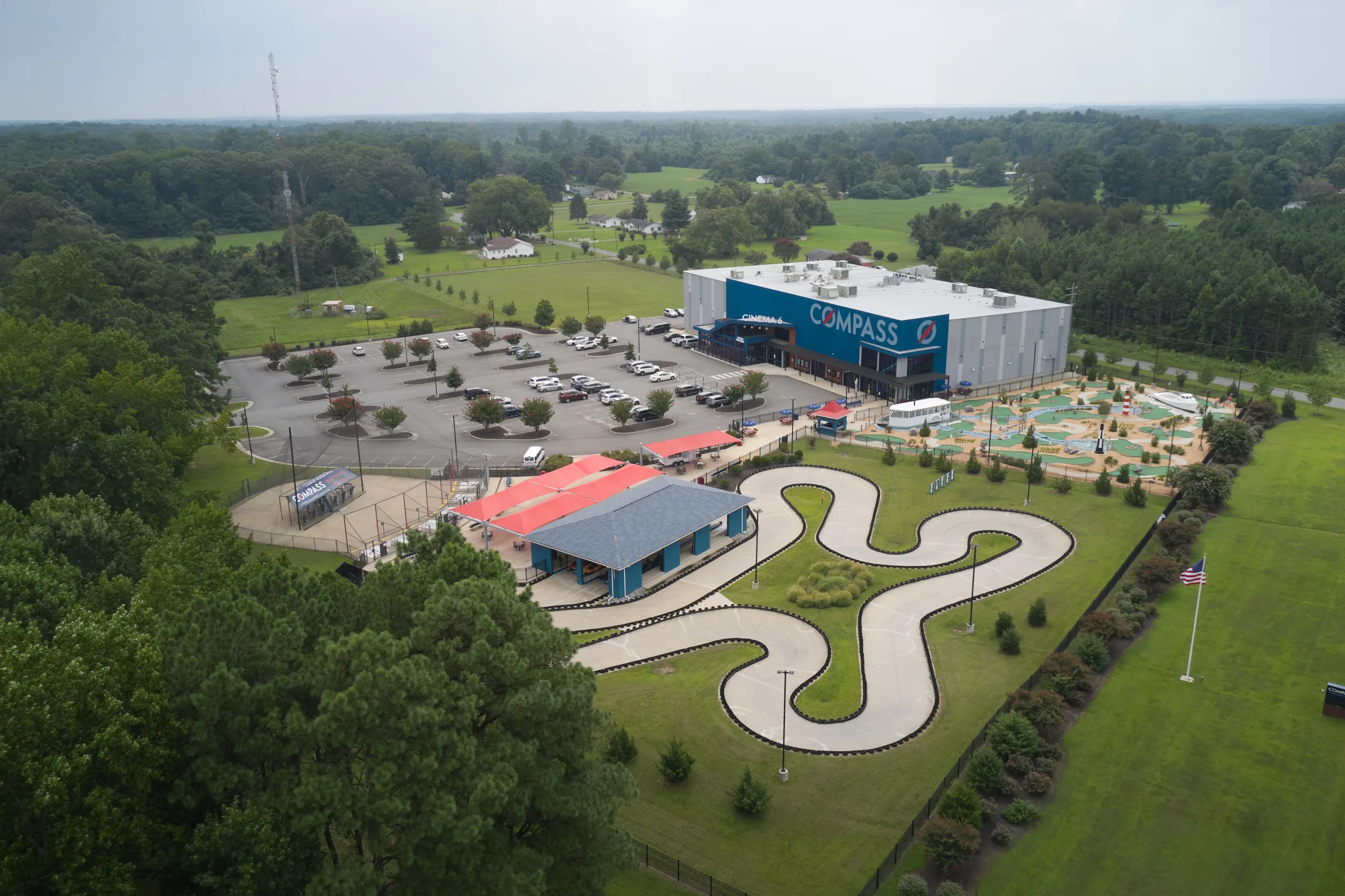A third of our lives—roughly 90,000 hours—is spent at work. That’s more time than we devote to hobbies or family. Yet, for many, the workplace is a source of stress rather than satisfaction, impacting productivity and overall well-being. As companies rethink their approach to employee wellness, the conversation is shifting beyond traditional benefits to holistic strategies that support mental, physical, and emotional health. The modern workplace is evolving from more than just flexible schedules to mindfulness programs, and many Virginia firms are leading the change.
A Shifting Office Space
Workplace stress and dissatisfaction are longstanding issues, but researchers suggest the pandemic intensified the crisis.
A 2021 study from Mind Share Partners that surveyed 1,500 U.S. full-time working adults revealed that 75 percent of respondents reported at least one symptom of a mental health condition. With increasing anxiety levels and pressures on work-life balance, many employers have been forced to react with more robust wellness programs that go beyond offering good health insurance and paid time off.
“It starts at the top,” says BJ Taylor, owner of Taylor & Associates, Inc., a management consulting firm based in Norfolk. “A healthy workplace requires a solid mission.” What does that mean? It’s as simple as management understanding and being aligned on what they want to accomplish and putting the right people in place to achieve that goal. For example, Taylor says “If you’ve been looking for someone to fill a job and have not been successful, you may need to re-evaluate the job description, even if it’s recent, because something is not in alignment.” You wouldn’t hire people looking to work remotely to run a brick-and-mortar retail space. In that same vein, you wouldn’t use the same job description from five years ago to hire someone after a department veteran leaves. “By putting the right people in the right roles, they have a better chance of being successful and satisfied with their positions.”
And then, the company’s leadership must fully embrace their mission and assess their mission each year to make sure it continues to be relevant. They need to be genuine advocates for their vision, embodying it with conviction and commitment. That’s what spurs businesses forward.

Love it or Leave It
But leadership alone isn’t enough. Employee satisfaction extends beyond simply landing the right job or having an inspiring leader—a lesson Brent Lillard, founder of GovSmart, a government contracting firm in Charlottesville, has learned firsthand.
What began in 2009 as a kitchen table venture with his best friend grew into an 80-person team. “Because our business was founded on friendships, we’ve worked to create a fun and fulfilling culture,” Lillard explains. Emphasizing a “work hard, play hard” ethos, the company expects employees to operate from its offices primarily but also rewards them with an annual company-wide trip.
“We’ve taken our team to Aspen, Maui, and the Bahamas,” says Lillard. This year, 105 employees, their spouses, and some children enjoyed a trip to Atlantis Paradise Island Resort in the Bahamas. He believes these kinds of perks motivate employees and strengthen retention.
Yet, in an era of flexible work, Lillard has had to enhance in-office benefits as well to keep GovSmart an attractive workplace. During September—GovSmart’s busiest month—the company provides lunch daily through catering or a food truck. The office is always stocked with healthy snacks, ensuring employees can refuel quickly. For those who bike to work or prefer a mid-day workout, the Charlottesville headquarters features a shower for convenience.
Beyond office perks, employees also enjoy generous time off, complimentary membership to Lillard’s other business, Gracie Charlottesville Jiu-Jitsu, unlimited access to Green Hills Golf Course, and off-site team-building activities like a recent excursion on horseback.
For other companies, like the 57,000-employee-strong Capital One, based in McLean, supporting families plays a big role in workplace wellness. The company has on-site health centers with full-service primary care provider offices where patients can be treated for acute illnesses and injuries, have physicals, and be treated for chronic health conditions. This includes its office in Richmond.
In addition, the company offers 15 free days of backup child or elder care each year. This benefit allows associates to work by caring for their children or older adults in their homes without losing PTO. Capital One HR spokeswoman Jamie Dorrough says, “When regular care routine is disrupted, associates can log into their Bright Horizons’ platform to schedule care in high-quality centers for well children, screened in-home caregivers for children, and in-home adult and elder care is available.”

Forecasting for the Future
Workplace wellness programs aren’t one-size-fits-all—what works for a white-collar company may not suit a blue-collar operation. At Manakin Sabot’s Luck Companies, the nation’s largest family-owned producer of construction aggregates, employee well-being is a priority across a workforce of 1,000 employees spanning four states. Mark Barth, the company’s chief talent officer, leads that effort and brings 27 years of institutional knowledge to the role.
Unlike traditional office settings, much of the work at Luck happens far from desks and computer screens. Of the 1,000 employees, 600 are hourly associates working outdoors—often in the rain, navigating muddy terrain—processing stone materials in challenging conditions.
Barth conducts an annual survey to understand employee needs better, asking questions like, “Do you feel engaged and empowered?” The insights gathered help shape programs designed to “ignite human potential.” For Barth, supporting employees goes beyond offering competitive pay and benefits—it’s about addressing the barriers that hinder success.
One major factor? Financial insecurity. A company can offer competitive wages, but if a person operates from financial ignorance, they can’t fully take advantage of those earnings. “If someone is living paycheck to paycheck or struggling with debt, even a good salary won’t relieve their stress,” Barth says.
To address this, Luck provides financial wellness resources, including access to financial advisors, budgeting workshops, and retirement planning support. “We want to equip our people with the tools to manage their money wisely so they can focus on their work without the constant worry of financial instability,” he adds.
Similarly, at Capital One, prioritizing financial literacy is baked into the business. “We believe our associates should get the same support to care for their financial well-being as we give our customers,” Dorrough says. “The Living Your Best Financial Life financial literacy program teaches practical strategies for building savings, sticking to a budget, and getting rid of debt—the topics we have heard are most important to them.”
Luck has also seen results by addressing spiritual health through Corporate Chaplains of America that “gives employees the opportunity to request a care session, be it a call, a visit, or conversation, should the need arise,” Barth says. In keeping with addressing the whole person, Luck also offers coaching services where an employee can access five sessions to focus on therapy, fitness, or diet.
The evolution of workplace wellness is no longer a perk but a necessity. As companies across Virginia take a more holistic approach, they’re proving that investing in employees’ mental, physical, and financial well-being pays off—not just in retention and productivity but in overall workplace culture. Whether offering flexible work arrangements, financial literacy programs, or even a company-wide retreat, businesses recognize that a thriving workforce is an engaged and inspired one. As the future of work continues to evolve, one thing is clear: prioritizing employee well-being isn’t just suitable for people—it’s good for business.

Capital One prioritizes creating work spaces for collaboration and productivity. Interior design by Gensler Charlotte.
Photo courtesy of: Capital One | by Garrett Rowland

Ergonomic seating and a casual dress policy are just two of the many investments GovSmart’s CEO Brent Lillard (at right) has made to boost employee satisfaction. Courtesy of GovSmart
This article originally appeared in the June 2025 issue.








